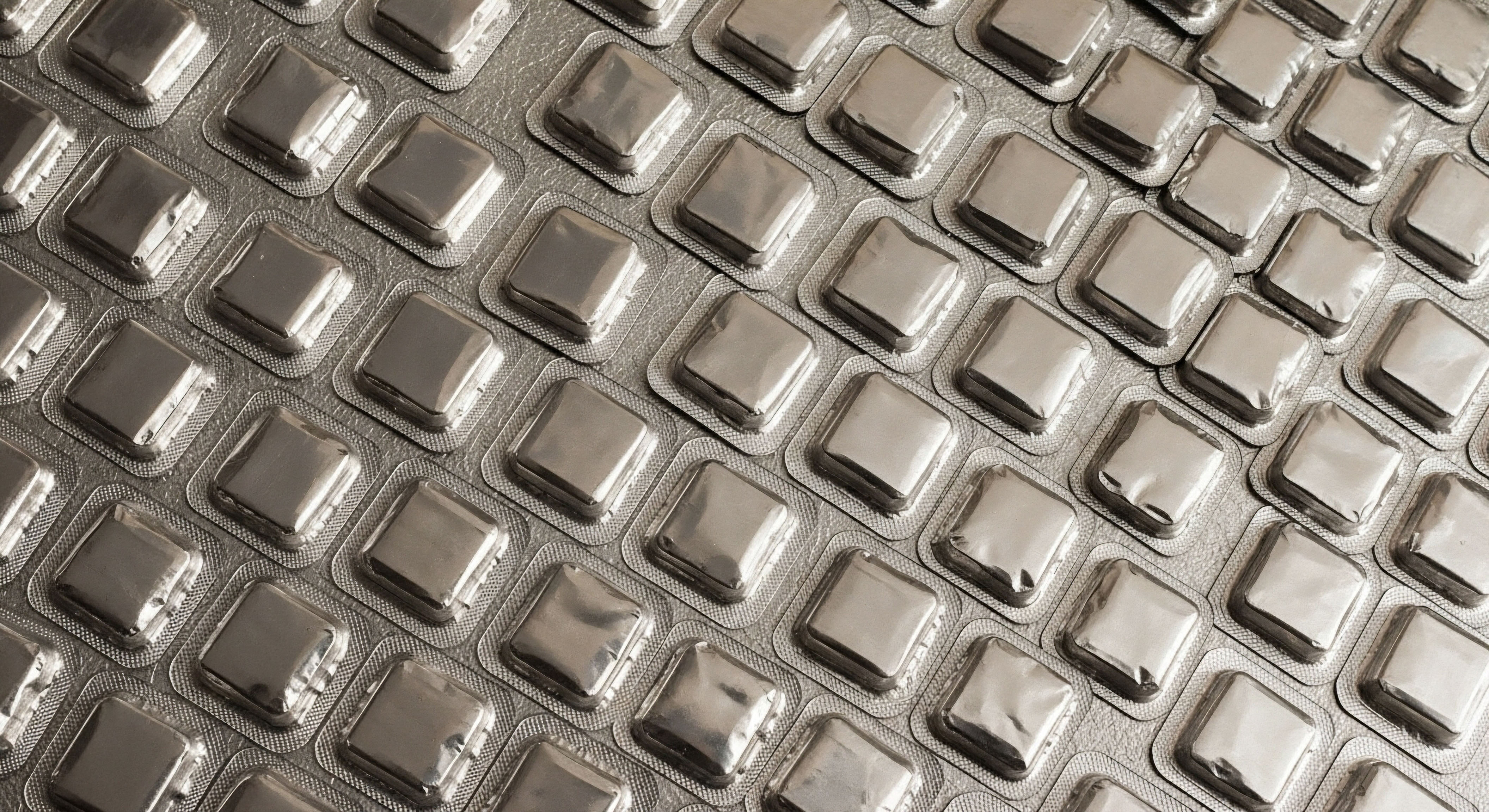

Reclaiming Hormonal Equilibrium
Many individuals experience subtle yet pervasive shifts in their overall well-being ∞ changes in energy, sleep quality, body composition, or emotional resilience. These sensations often hint at an underlying narrative within the body’s intricate communication network. Our internal messaging system, governed by hormones, orchestrates virtually every physiological process, from cellular metabolism to cognitive function. When this system encounters discord, the lived experience reflects that disruption, manifesting as symptoms that diminish vitality.
Understanding these internal signals marks the first step toward reclaiming optimal function. Lifestyle choices stand as primary modulators of this delicate endocrine balance. Daily patterns of nutrition, physical activity, sleep, and stress management exert profound influences on hormonal synthesis, receptor sensitivity, and feedback loops.
These foundational elements lay the groundwork for a robust and adaptive physiological state. An imbalance, therefore, seldom arises in isolation; rather, it often represents a cascade of interconnected events, a ripple effect through the body’s complex systems.
Hormonal well-being reflects the intricate interplay of daily lifestyle choices, which profoundly shape the body’s internal communication network.
Consider the foundational pillars influencing your endocrine health ∞
- Nutrition ∞ The quality and composition of dietary intake directly influence insulin sensitivity, thyroid function, and steroid hormone production.
- Movement ∞ Regular physical activity impacts metabolic rate, stress hormone regulation, and the efficient utilization of glucose.
- Sleep ∞ Adequate, restorative sleep is indispensable for the pulsatile release of growth hormone and the circadian rhythm of cortisol.
- Stress Mitigation ∞ Chronic psychological stressors elevate cortisol levels, potentially perturbing the delicate balance of other endocrine axes.

The Body’s Internal Messaging System
The endocrine system functions as a sophisticated communication network, dispatching chemical messengers, hormones, to target cells throughout the body. These messengers bind to specific receptors, initiating a cascade of intracellular events that regulate growth, metabolism, mood, and reproductive processes. A disruption in this precise signaling, whether from inadequate hormone production, impaired receptor function, or altered degradation, can manifest as a wide array of symptoms. Recognizing these biological underpinnings empowers individuals to interpret their body’s signals with greater clarity and precision.


Can Lifestyle Adjustments Alone Recalibrate Endocrine Function?
While the profound influence of lifestyle on hormonal health remains undeniable, a critical distinction arises concerning the degree of imbalance. For many, dedicated adherence to optimized lifestyle protocols can indeed restore a significant measure of endocrine equilibrium. Dietary modifications, structured exercise regimens, disciplined sleep hygiene, and effective stress reduction techniques collectively bolster the body’s inherent capacity for self-regulation. These strategies improve insulin sensitivity, modulate inflammatory responses, and optimize the rhythmic release of various hormones.
There exists, however, a physiological threshold where lifestyle interventions, while still vital, may prove insufficient to fully normalize deeply entrenched hormonal dysregulation. This threshold often becomes apparent when symptoms persist despite rigorous lifestyle adherence, or when laboratory markers indicate significant deviations from optimal ranges.
At such junctures, a more targeted, clinically guided approach often becomes essential to support the body’s recalibration. The “how” and “why” of these interventions hinge upon understanding specific biochemical pathways and feedback loops that may require more direct modulation.
Lifestyle modifications are foundational for hormonal health, yet some profound imbalances necessitate targeted clinical support for full recalibration.

Interconnectedness of Lifestyle and Hormonal Axes
The body’s endocrine axes operate in a complex, interconnected symphony. For instance, chronic stress can dysregulate the Hypothalamic-Pituitary-Adrenal (HPA) axis, leading to sustained cortisol elevation. This, in turn, can suppress thyroid function, impair insulin signaling, and even diminish gonadal hormone production. Optimized lifestyle choices serve to harmonize these axes, preventing minor deviations from escalating into systemic dysregulation.
Consider the impact of specific lifestyle components on key hormonal systems ∞
| Lifestyle Pillar | Primary Hormonal Impact | Mechanism of Action |
|---|---|---|
| Nutrition | Insulin, Leptin, Thyroid Hormones | Regulates glucose homeostasis, satiety signals, and metabolic rate. |
| Exercise | Cortisol, Growth Hormone, Testosterone | Modulates stress response, stimulates anabolic processes, improves insulin sensitivity. |
| Sleep | Melatonin, Growth Hormone, Cortisol | Synchronizes circadian rhythms, supports cellular repair, regulates stress hormones. |
| Stress Management | Cortisol, Adrenaline, DHEA | Mitigates HPA axis overactivity, preserves adrenal reserve. |

Recognizing the Threshold for Clinical Support
Determining when lifestyle alone is no longer sufficient involves a careful assessment of persistent symptoms and objective biomarker data. A persistent low libido despite improved diet and exercise, for example, might signal a need to investigate gonadal hormone levels more deeply. Similarly, intractable fatigue or mood disturbances could indicate a more profound dysregulation of thyroid or adrenal function.
These are instances where a clinically informed perspective can identify specific biochemical pathways requiring precise intervention, moving beyond generalized wellness strategies to targeted endocrine support.


When Do Biological Systems Demand Targeted Intervention?
A sophisticated understanding of endocrine physiology reveals that while lifestyle provides the essential substrate for health, specific biochemical recalibrations are often indispensable for restoring optimal function when imbalances become deeply rooted. The intricate dance of the Hypothalamic-Pituitary-Gonadal (HPG) axis, for instance, involves a series of feedback loops susceptible to perturbation by chronic stressors, environmental toxins, and genetic predispositions.
Lifestyle interventions certainly ameliorate some of these stressors, yet they may not fully address deficiencies in hormone production or receptor sensitivity that have become pronounced.
Consider the neuroendocrine-immune interface, where systemic inflammation or chronic immune activation can directly impair hormonal signaling at the cellular level. This intricate cross-talk necessitates a multi-faceted approach, often requiring more than behavioral modifications. Targeted therapeutic agents, such as specific hormone replacement protocols or peptide therapies, act with precision on receptor sites, enzyme pathways, or signaling cascades to restore homeostatic balance.
These interventions are not mere symptomatic treatments; they represent a strategic engagement with the body’s intrinsic regulatory mechanisms, aiming to re-establish optimal physiological set points.
Deeply entrenched hormonal dysregulation often necessitates targeted clinical interventions to restore physiological set points beyond the reach of lifestyle alone.

Mechanistic Insights into Endocrine Recalibration
The efficacy of clinical protocols in normalizing hormonal imbalances stems from their direct interaction with specific molecular targets. For instance, in hypogonadism, Testosterone Replacement Therapy (TRT) directly replenishes androgen levels, activating androgen receptors in target tissues to restore muscle mass, bone density, and libido.
The co-administration of agents like Gonadorelin or Enclomiphene aims to preserve endogenous testicular function by stimulating LH and FSH release, thus maintaining spermatogenesis and fertility. Anastrozole, an aromatase inhibitor, modulates the conversion of testosterone to estradiol, preventing estrogenic side effects and maintaining a favorable androgen-to-estrogen ratio.
Peptide therapies, such as Sermorelin or Ipamorelin/CJC-1295, represent another dimension of targeted intervention. These growth hormone-releasing peptides (GHRPs and GHRHs) stimulate the pulsatile release of endogenous growth hormone from the pituitary gland. This physiological release pattern contrasts with exogenous growth hormone administration, offering a more nuanced approach to improving body composition, recovery, and cellular repair. Tesamorelin, a GHRH analog, has specific applications in reducing visceral adiposity, demonstrating the highly targeted nature of these biochemical agents.
Clinical markers provide objective data points for assessing the need for and efficacy of these interventions ∞
- Serum Testosterone ∞ A direct measure of androgen status, crucial for diagnosing hypogonadism in men and assessing androgen deficiency in women.
- Estradiol (E2) ∞ Essential for monitoring aromatization in men on TRT and assessing estrogen status in women.
- Luteinizing Hormone (LH) and Follicle-Stimulating Hormone (FSH) ∞ Indicators of pituitary function and the integrity of the HPG axis.
- Insulin-like Growth Factor 1 (IGF-1) ∞ A biomarker for growth hormone activity, monitored during peptide therapy.
- Thyroid Stimulating Hormone (TSH) and Free Thyroid Hormones (FT3, FT4) ∞ Comprehensive assessment of thyroid function, a common area of metabolic dysregulation.

The Synergy of Lifestyle and Clinical Support
The most effective personalized wellness protocols integrate rigorous lifestyle optimization with precisely targeted clinical interventions. Lifestyle creates the optimal internal environment, enhancing the responsiveness of cells to hormonal signals and therapeutic agents. Clinical support, in turn, addresses specific deficiencies or dysregulations that lifestyle alone cannot fully resolve.
This synergistic approach respects the body’s complex biology, offering a comprehensive strategy for achieving and sustaining optimal vitality and function. The precise calibration of these elements requires a deep understanding of endocrinology, metabolic pathways, and individual physiological responses.
| Biomarker | Clinical Relevance | Implications for Intervention |
|---|---|---|
| Total & Free Testosterone | Assesses androgen status; correlates with libido, energy, muscle mass. | Guides TRT dosage; indicates need for fertility-preserving agents. |
| Estradiol (E2) | Monitors aromatization; influences bone density, mood, and cardiovascular health. | Adjusts aromatase inhibitors; optimizes estrogen levels in women. |
| LH & FSH | Evaluates pituitary function; distinguishes primary vs. secondary hypogonadism. | Informs use of Gonadorelin, Clomid, or Tamoxifen. |
| IGF-1 | Reflects growth hormone secretion; affects cellular repair and metabolism. | Monitors efficacy of growth hormone peptide therapy. |
| HbA1c & Fasting Insulin | Indicates long-term glucose control and insulin sensitivity. | Guides nutritional and exercise strategies; may indicate need for metformin. |

References
- Boron, Walter F. and Edward L. Boulpaep. Medical Physiology. 3rd ed. Elsevier, 2017.
- Guyton, Arthur C. and John E. Hall. Textbook of Medical Physiology. 14th ed. Elsevier, 2020.
- Melmed, Shlomo, et al. Williams Textbook of Endocrinology. 14th ed. Elsevier, 2020.
- Meldrum, David R. “The Pathophysiology of Postmenopausal Symptoms.” Obstetrics & Gynecology, vol. 104, no. 6, 2004, pp. 1329-1336.
- Bhasin, Shalender, et al. “Testosterone Therapy in Men With Hypogonadism ∞ An Endocrine Society Clinical Practice Guideline.” Journal of Clinical Endocrinology & Metabolism, vol. 103, no. 5, 2018, pp. 1715-1744.
- Giustina, Andrea, et al. “Growth Hormone-Releasing Hormone and Growth Hormone-Releasing Peptides ∞ Biological and Clinical Aspects.” Endocrine Reviews, vol. 22, no. 4, 2001, pp. 581-602.
- Traish, Abdulmaged M. “Testosterone and the Aging Male ∞ A Perspective on the Utility of Testosterone Replacement Therapy.” Current Pharmaceutical Design, vol. 16, no. 23, 2010, pp. 2489-2503.

Reflection
This exploration into hormonal health invites a deeper introspection into your own biological narrative. The knowledge acquired represents a powerful compass, guiding you toward a more profound understanding of your body’s signals and needs. A personalized path to reclaimed vitality and function often requires not just general insights, but a precise, individualized strategy. This journey of understanding serves as the essential first step, fostering a proactive potential for sustained well-being.



